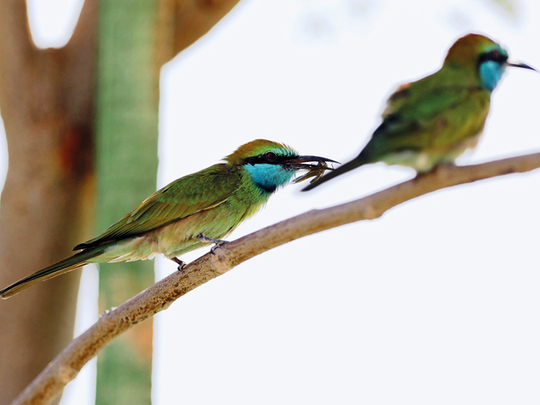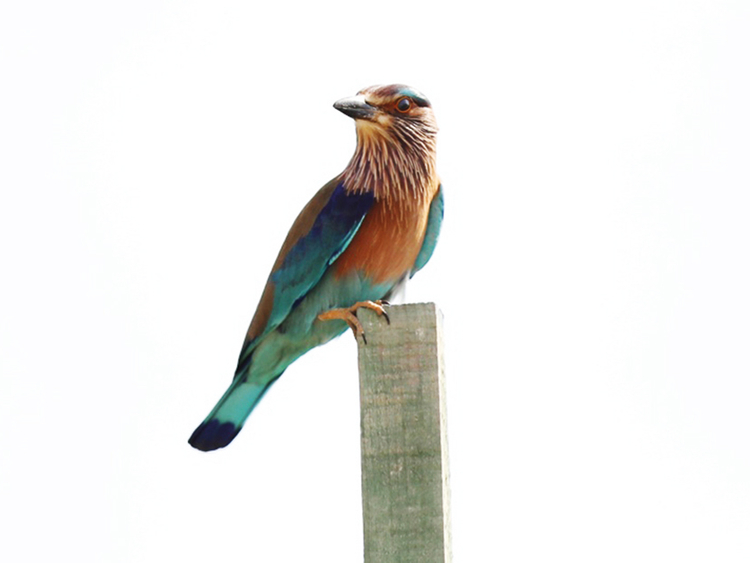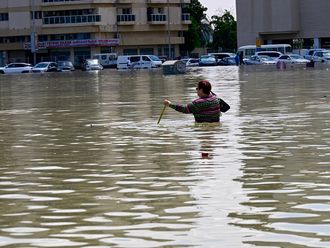
Dubai: Dubai Safari, which opened its doors to the public last week, is not only home to the wildlife of the world for conservation breeding, but it has also become a hub for receiving migratory birds and some of the local UAE birds.
The Conservation Team of Dubai Safari has already recorded nearly 80 species of birds, 70 per cent of which are migratory and the rest are resident, either breeding inside the Safari or its neighbourhood, Dubai Municipality said on Monday.
Most recent arrivals are four sub-adult Greater Flamingoes, which have migrated to the UAE with a small population, breeding in islands in Abu Dhabi. The migratory birds come from northern Iran and parts of Central Asia, the civic body said in a press release.
The Safari Conservation Team, headed by Dr. Reza Khan, principal wildlife specialist of Dubai Safari and Dubai Municipality, is responsible for recording the plants that are growing naturally in the Safari and the animals visiting the Safari on transit or becoming permanent residents there.
During this winter, Dubai Safari has received four new passage migrants as guests to it for the first time.
These are the Daurian or Isabelline Shrike, Temminck’s Stint, Common Sandpiper and Wood Sandpiper. These birds and many water loving birds are using the lavishly built pools, lakes and ponds of Dubai Safari, which exhibit a wide variety of animals.
While on a tour of the Safari early in the morning Dr. Khan noted three specimens of Daurian Shrike that is also called Isabelline Shrike, which is a resident of Central Asia and parts of Europe.
The other three species are called waders or shorebirds that usually breed in parts of Asia and Europe, even in areas in Siberia in Russia. These waders migrate from their breeding grounds to the Arabia, Middle East and then head to the coastal areas of the Red Sea and East Coast of Africa during the three seasons. First they come in autumn, that means now, then in winter and again in spring.
In addition to over three dozen species of birds noted earlier, Dr. Khan has seen these birds comfortably eating insects and worms near water and in hedges.
Wetland birds such as herons, ducks, waders and local Red-wattled Lapwing and Back-winged Stilts are enjoying the water bodies in the park.
New plant species
The conservation team has also recorded over three dozen species of plant seeds, which must have come along the other imported or locally procured plants, and with the sand and soil brought from outside. These plants are adding beauty to several thousand plants already planted in the Safari.
The Dubai Government’s efforts in greening the city are definitely bearing fruits as a result of which many birds are attracted to built-up areas like Dubai Safari and all the parks in Dubai, said Dr. Khan.
“Recording of some 80 species of birds and nearly 35 species of plants from Safari is proving that Dubai Safari is the future for many new bird species getting their suitable transit homes for the migrants and permanent homes for the local ones.”
He said Dubai Safari is paying a kind of dividend to the Emirati people by becoming an attractive site for birds and other animals as well as some local and exotic plants.














